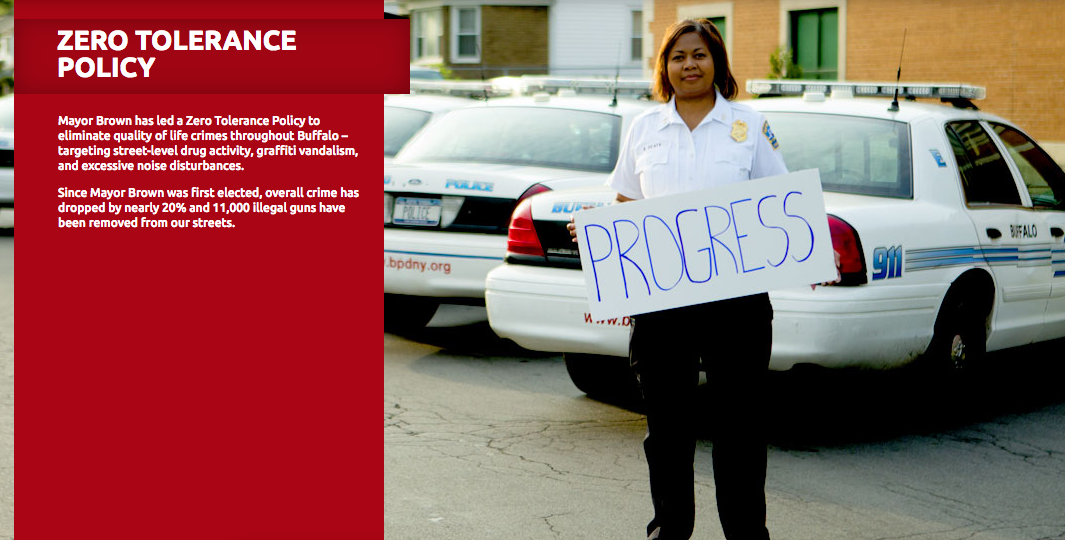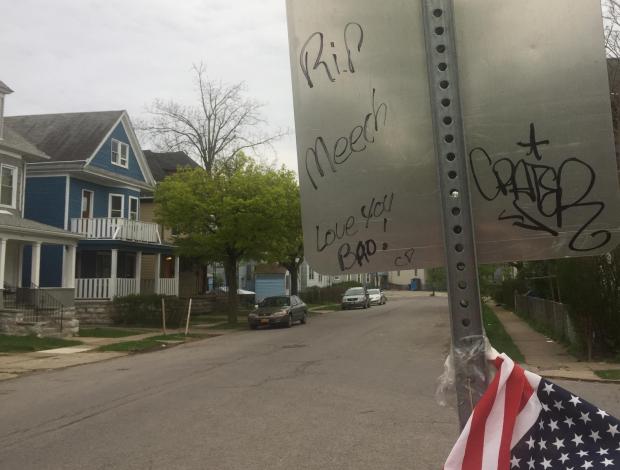Obstruction of Justice Continues for Meech Davis
Last Friday, right against 5pm, news broke that the death of Wardel “Meech” Davis, who had been stopped by police on February 7 for still unknown reasons, had been ruled a homicide by the county medical examiner.
Reports were unanimous, however, in stating that Davis’s respiratory distress contributed to his death, saying that his acute bronchitis and asthma played a role. Police have maintained from the beginning—and media have mostly taken their word for it—that B-District officers Todd C. McAlister and Nicholas J. Parisi were engaged in some kind of “scuffle” or “struggle” with Meech before he stopped breathing while handcuffed.
Police have still not offered any explanation as to why Meech was stopped in the first place, nor what that conflict looked like. The Buffalo News has reported on a text exchange between Meech and a friend on the night of his death, in which Meech said that he was ill and suffering respiratory distress.
Frequent police attorney and de facto spokesperson Thomas H. Burton, who is representing McAlister in this matter, seized upon the information regarding Davis’s medical state. “There was no way either one of them could know the person they were trying to arrest suffered from hidden but nonetheless serious medical problems,” he told the Buffalo News.
The News bizarrely has allowed Burton to define homicide in this case—a definition in which homicide doesn’t constitute murder, and in which Davis’s illness here matters.
SUNY at Buffalo law professor Anjana Malhotra, who specializes in civil rights, sharply disagrees. The idea that the officers should be exonerated by this information is premature, she says, and adds that the idea that homicide isn’t homicide in this case is “legally incorrect.”
“New York law is clear that the existence of other contributing factors to a fatality—here asthma—does not absolve the assailants of committing homicide and engaging in criminal wrongdoing,” Malhotra explains. “Further, New York Courts have made clear that an assailant is liable for a homicide when their conduct contributes to a fatality, even when there are other factors that lead to the victim’s death, and even when the individual’s actions are not necessarily the immediate cause of death.”
Attorney Steve Cohen, who is representing Davis’s girlfriend Jashalyn Washington in the case, says that homicide simply means that someone else caused a death. “The truth is simple,” he told The Public. “The facts are the facts.”
And yet the same defense is being invoked in Niagara County over the death of 25-year-old jail inmate DeJuan Hunt last year. His death was also ruled a homicide in February, but both Sheriff James R. Voutour and District Attorney Caroline A. Wojtaszek have thrown cold water on this language.
“The medical definition of homicide is far different than the criminal definition,” Voutour told the Buffalo News.
“In this case, such a determination by the medical examiner does not mean that they find that the death was intentional, nor do they find it was criminal,” Wojtaszek said.
Hunt’s autopsy concluded that there were injuries on Hunt’s shins which may have caused rhabdomyolysis, a syndrome that can lead to renal failure.
The major difference between the Hunt and Davis investigations as they currently stand is that, pursuant to a new state law, Davis’s death is being investigated by the state attorney general’s office, while Hunt’s case is being investigated by the Niagara County DA and the state’s Commission of Correction.
But for all the orchestrated shade thrown on the Wardel Davis autopsy report, there were some tells.
A week after Davis’s death, the News reported that an autopsy would not be complete for up to two months, due to toxicology testing. If Davis, who prior reporting indicated had at times been in possession of cocaine and heroin, had any heavy drugs in his system, wouldn’t Burton and the BPD have made that public by now?
It’s also interesting to track Mayor Byron Brown’s comments on the matter. The day after the death, Brown said he had called Davis’s grandmother to assure her there’d be an investigation. He called the event a “tragedy that is unfolding on various levels.”
After the homicide news broke, he released the following statement: “My thoughts and prayers continue to be with Mr. Davis’ family and all of those who have been impacted by this tragedy.”
Whether it was a poor choice of words or a deliberate nod, “all those who have been impacted by this tragedy” and “on various levels” of course includes McAlister and Parisi, who remain on paid administrative leave, and whose fates currently rest with the attorney general.
The office of Attorney General Eric Schneiderman was less ecumenical in its statement: “Our hearts go out to Mr. Davis’ family. We are committed to conducting a full, fair and comprehensive independent investigation, which is still ongoing at this time.”
Meanwhile, the Buffalo Police keep shutting doors on efforts toward transparency in the case. Steve Cohen told The Public that he has been trying “non-stop” to get key information on the case since day one, including the times for calls for backup and medical help that Parisi and McAlister made from the scene on February 7. Cohen said that he has interviewed multiple witnesses who have described a 40-minute gap between medical intervention being necessary and its arrival.
That the autopsy was completed and not shared with the family, but evidently shared with the authorities first, is another red flag for Cohen, who accused the police of concocting a “fact scenario” rather than a real investigation. “They have all their ducks in a row,” he said. “They are putting their records together in a way to escape culpability.”
That the police have not established a reason for stopping Meech to begin with is “insane” to Cohen. “A dispatcher would have punched a card,” he said, referring to how 911 calls are processed.
But it does not seem there was a 911 call concerning Meech that night. We know that McAlister and Parisi were assigned to the B-District “detail car” that night, which, based on information made available to the Buffalo News and The Public, involves officers patrolling areas of regular criminal activity, often engaging in stop-and-frisk stops, allowing police wide latitude on their decision to intervene with a citizen. This police behavior matches the “zero tolerance” policing policy that has been a hallmark of the Brown administration and is currently featured on the front page of his re-election campaign website.

From ByronBrown.com
We also know that Meech was on Parisi and McAlister’s radar, having been arrested for drugs in the recent past. The Public has requested detail car reports from the BPD pursuant to Freedom of Information law, but the BPD has not yet released them.
Police have claimed that the house at 19 Hoyt Street, which Meech was exiting at the time he was stopped by police, was a “house known for drug activity” and the focus of frequent police calls in the past 10 years. Apparently, the BPD made those records available to the Buffalo News. Cohen claims to have interviewed residents in every unit of the house, and the closest any of the occupants came to that accusation was a description of a group of tenants as “college kids who smoked pot.” Cohen said he has also requested a record of police calls to 19 Hoyt Street and has so far received nothing.
“I will say that, after getting stonewalled, I did talked to the attorney general’s office, and they said they were conducting a thorough investigation,” Cohen said.
The city’s lack of cooperation with basic information requests on this matter certainly raises the specter of election-year gaming. Brown is now facing two challengers in September’s Democratic primary. Brown is the statewide chairman of the Democratic Party, and certainly has Eric Schneiderman’s attention.

